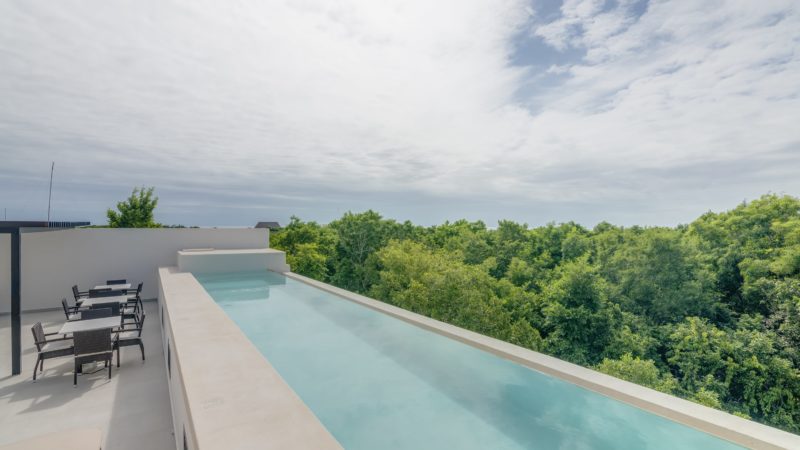
Living in Two Worlds: Owning a Home in Mexico and Abroad
Living in Two Worlds: Owning a Home in Mexico and Abroad
Why Do People Choose Two Homes?
Owning a second home in Mexico—especially in regions like the Riviera Maya—begins with a love affair: turquoise waters, outdoor living, and a lifestyle that feels lighter, sunnier, and slower. Yet, it’s also grounded in practical benefits: real estate affordability, healthy climate, cultural richness, and tourism value.
Personal story: I remember the excitement of stepping off the plane into tropical humidity for the first time, even though I knew I’d go back to my daily life in a cooler, faster-paced city. That contrast—holiday atmosphere vs. routine—makes having a second home in Mexico even more appealing.
What Types of Second Homes People Buy
1. Beachfront Condominiums
You wake up, walk out of the elevator, and you’re on the sand. These units are great for low-maintenance living, short-term rentals, or full-time escape.
2. Gated Villas
In places like Playacar or Puerto Aventuras, you get your own private pool, garden, and the luxury of customization—and added layers of security.
3. Eco-Developments
For the sustainability-minded, these offer solar energy, rainwater systems, and thoughtfully designed shared spaces. Great for minimalists or people who value green living.
How Do You Manage Two Homes?
Managing two homes isn’t as simple as booking flights—you need a plan:
Property Management Support
You’ll need help with cleaning, security, lawn care, and small repairs. Most second-home owners hire local management teams who keep a close eye when they’re not around.
Remote Communication Tools
WhatsApp, Skype, and shared document systems become lifelines for coordinating with local caretakers, monitoring bills or utility usage, and requesting weekly progress photos.
Scheduling Visits and Maintenance
Plan quarterly visits for deep cleaning, plumbing inspections, or landscaping. That way, nothing gets neglected—and your place stays in move-in-ready shape.
How Do You Juggle Life in Two Places?
Home Setup
- Keep clothes, toiletries, and basics ready in both homes—no one wants to unpack everything each time.
- Use “welcome baskets” in Mexico with necessities: toilet paper, soap, tea, snacks—that way your first night there feels cozy.
Social Life and Networking
- Have friends and connections in both places.
- If you live partially in the U.S. or Canada, maintain medical relationships, social clubs, or a gym membership.
- In Mexico, attend local community events, meet local expats or neighbors, connect through school if kids are involved.
Work and Digital Life Integration
- Use effective remote work tools (Slack, Zoom) and time-zone hacks (schedule virtual meetings early–your office might be 2 hours behind).
- Some second-home buyers become digital nomads, working from their Mexican home for months at a time.
Q&A: Common Concerns and Answers
Q: “How do I stay on top of bills and taxes in both countries?”
A: Automate everything possible—set up autopay for utilities, HOA fees, insurance. Hire a tax consultant to handle cross-border filings and treaties.
Q: “What about banking and transferring funds?”
A: For Mexico, you can open a local account as a non-resident. Link it to your home-country accounts. Use services with low transfer fees, and maintain an emergency U.S. credit card just in case.
Q: “What happens with property management when I’m gone?”
A: Find a management team that provides status reports, day-to-day support, and local contacts—or lean on neighborly networks for quick help when you’re remote.
What Is the Lifestyle Like?
Drinks with Ocean Views
Evenings on the terrace with a cocktail while the sun sets in colors you don’t see back home—absolute magic.
Community Groups
Playa del Carmen, Puerto Morelos, or Tulum Country Club all have vibrant expat groups. Social events range from beach yoga and potluck BBQs to informal language exchanges.
Seasonal Patterns
Autumn might be hurricane prep time, winter brings snowbirds and full beaches, and locals love spring for celebrations—knowing the rhythm of each season helps you plan your stays.
Real-Life Scenarios
Family Balancing Act
One couple will spend November–April in Mexico, refresh their villa, then head north for summers next to grandkids.
Work-Life Flow
An entrepreneur splits the year—half in Mexico writing and building business, half back home hosting events or teaching.
Sound Retirement Setup
Some retirees moved part-time for a few summers, fell in love, and now alternate seasons indefinitely.
Health, Insurance, and Legal Considerations
- Health Insurance: Carry an international policy that covers both countries, emergency evacuation, and repatriation.
- Local Healthcare Options: Mexico has internationally trained doctors and modern hospitals in resort regions. Still, a relationship with a primary care provider in the home country helps.
- Legal Advice: Use bilingual lawyers to understand property rights, inheritance, bloodlines, domestic laws—this helps you sleep confidently at night.
Why It’s Worth It
Owning a second home in Mexico grows into a lifestyle that’s deeply rooted in joy and flexibility:
- You learn a language.
- Your social circles expand.
- Your home respects two cultural rhythms.
- Your life becomes richer and more varied.
Owning a second home is a challenge and a delight—if balanced well, it merges cultures, rhythms, and lifestyles into something you shape with intention. It’s a personal journey that grows richer with every sunrise, sand-filled shoe, and friendly wave from the neighbors.



